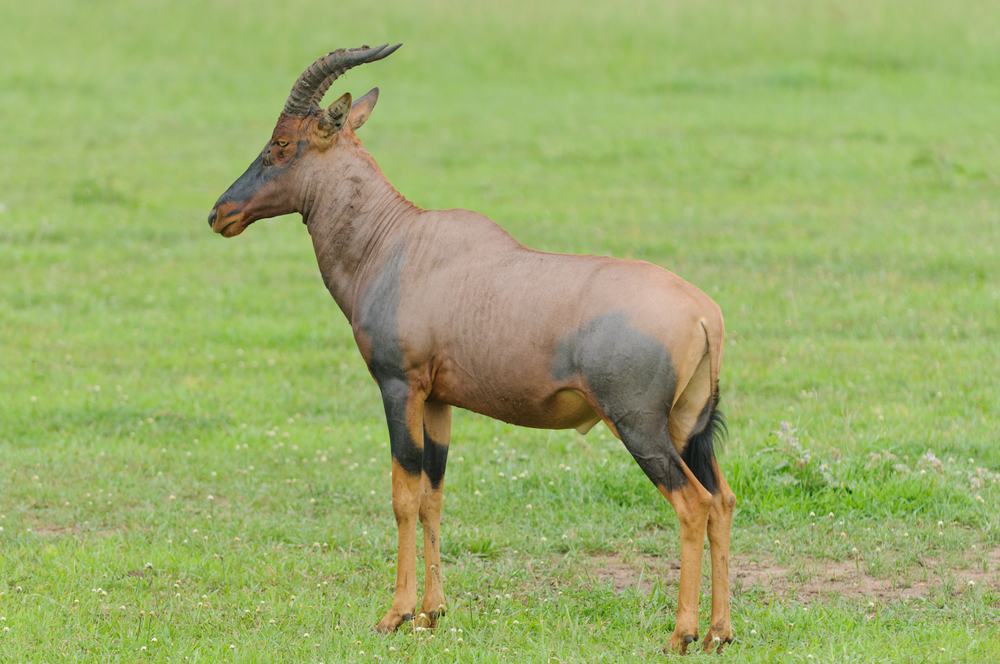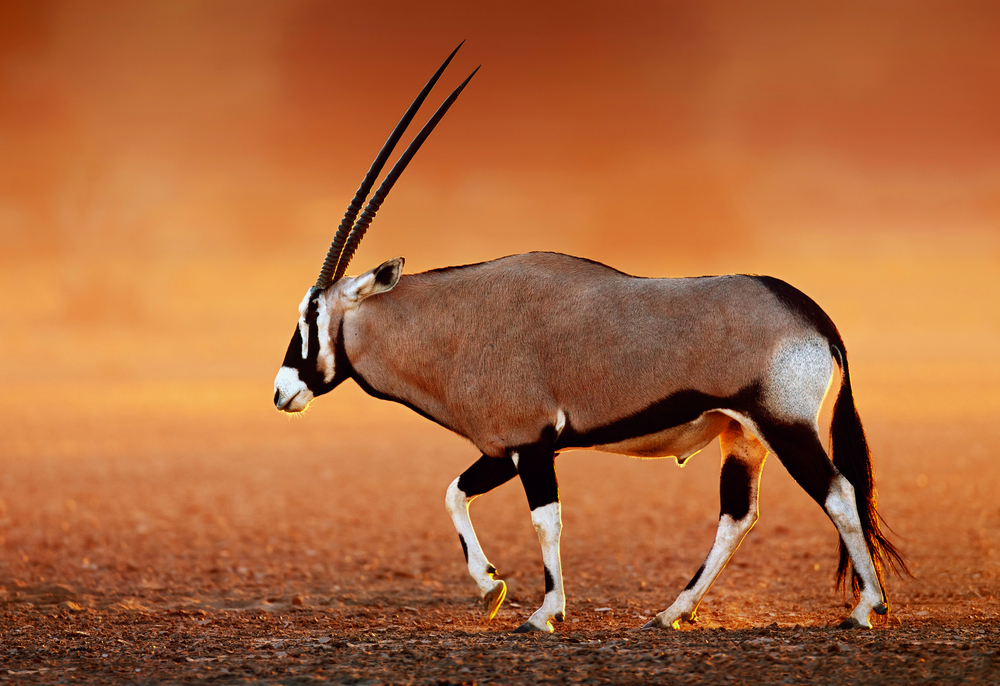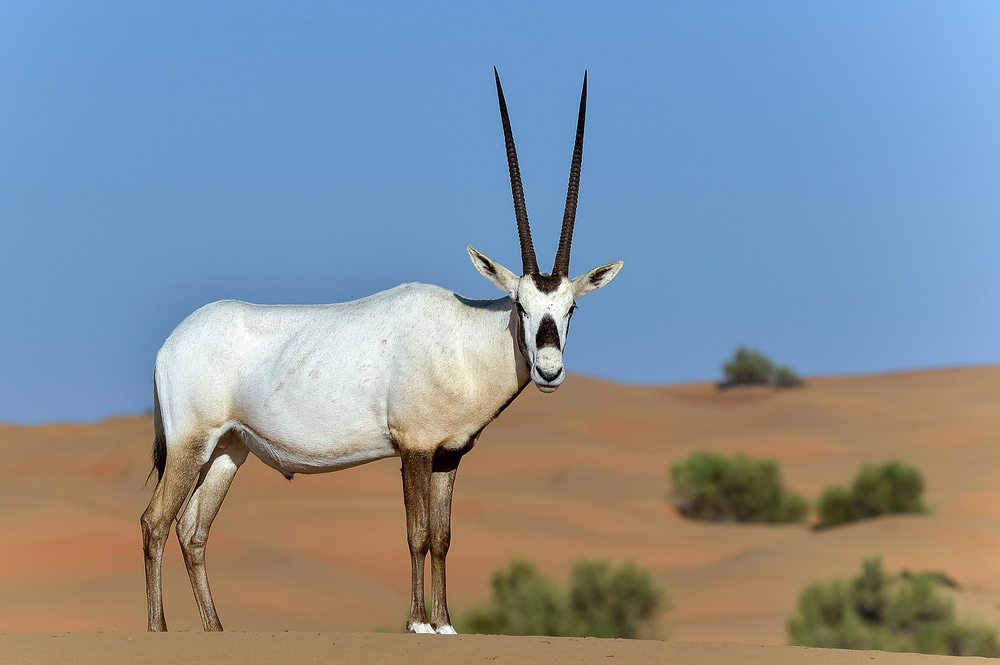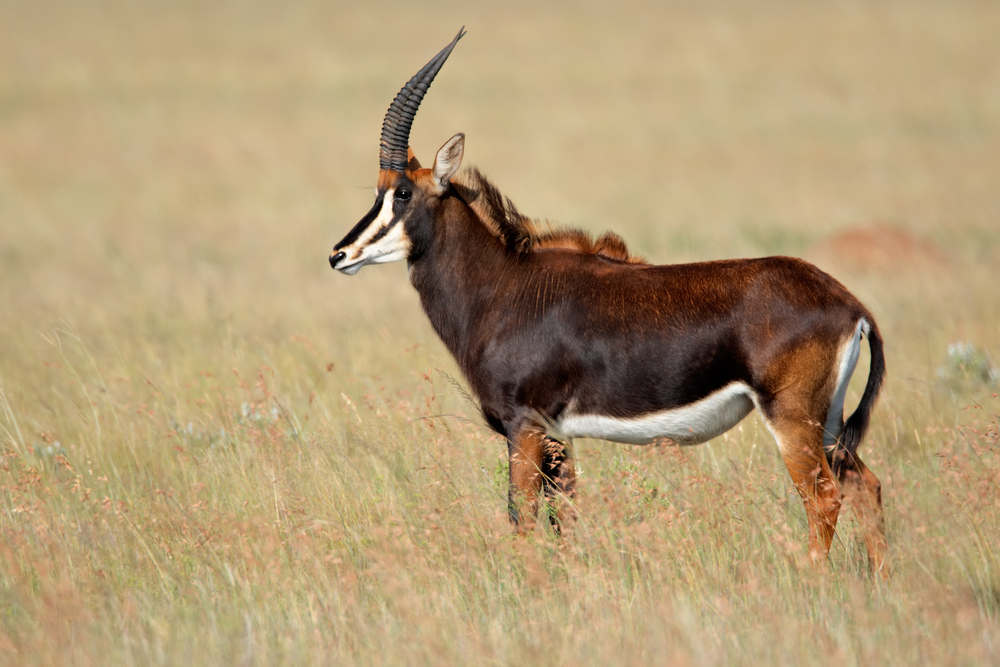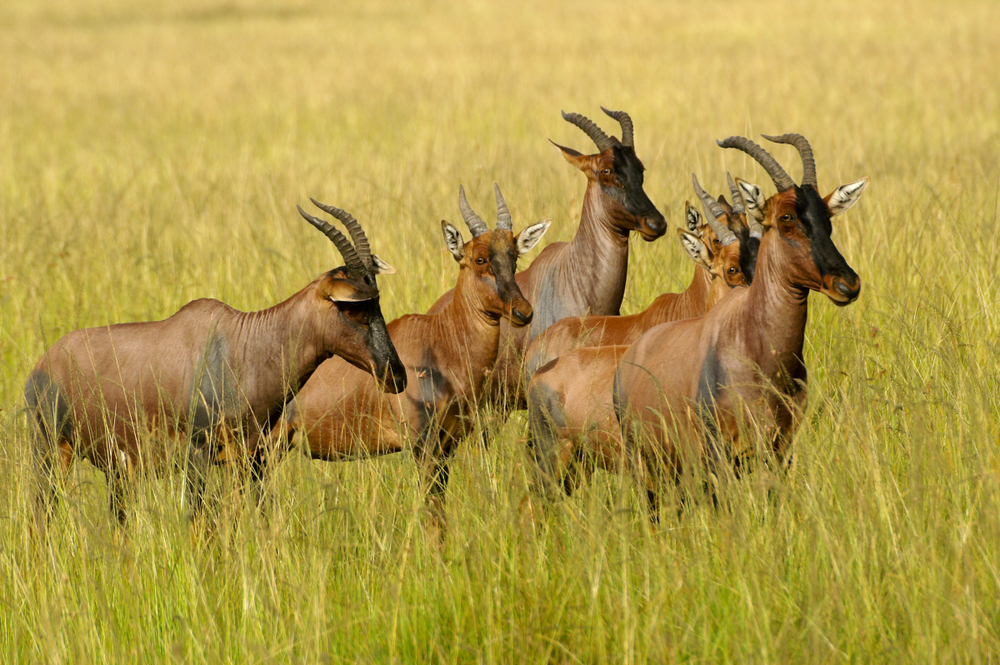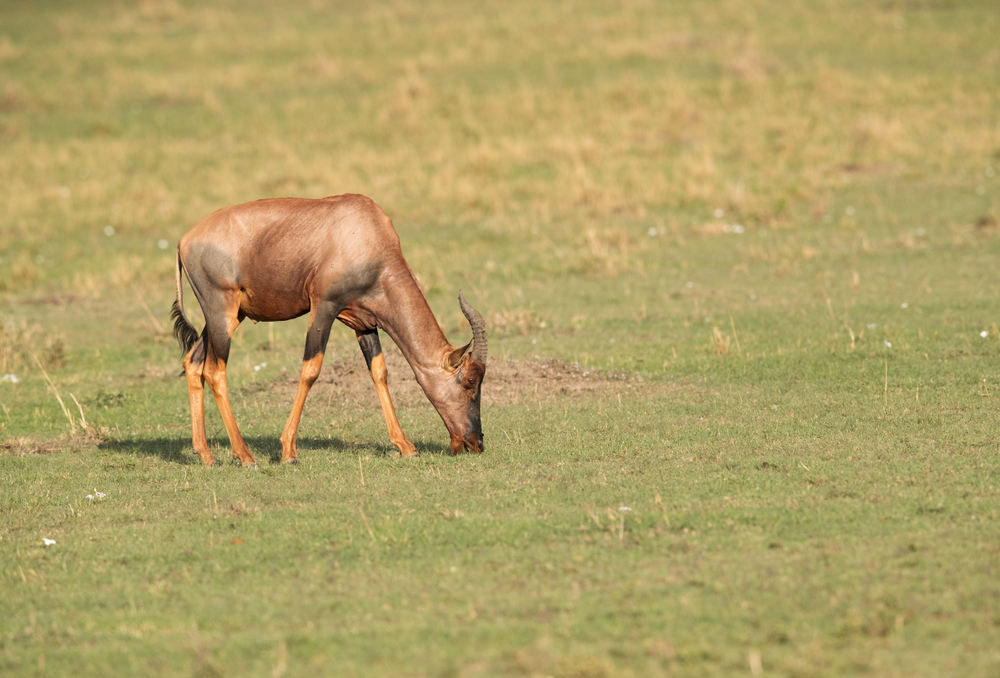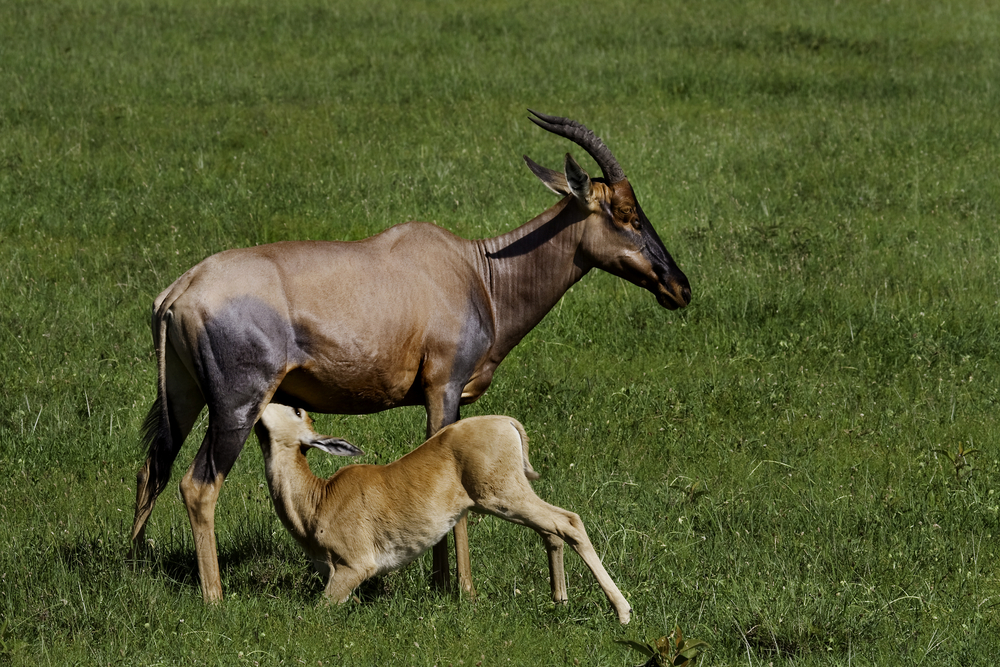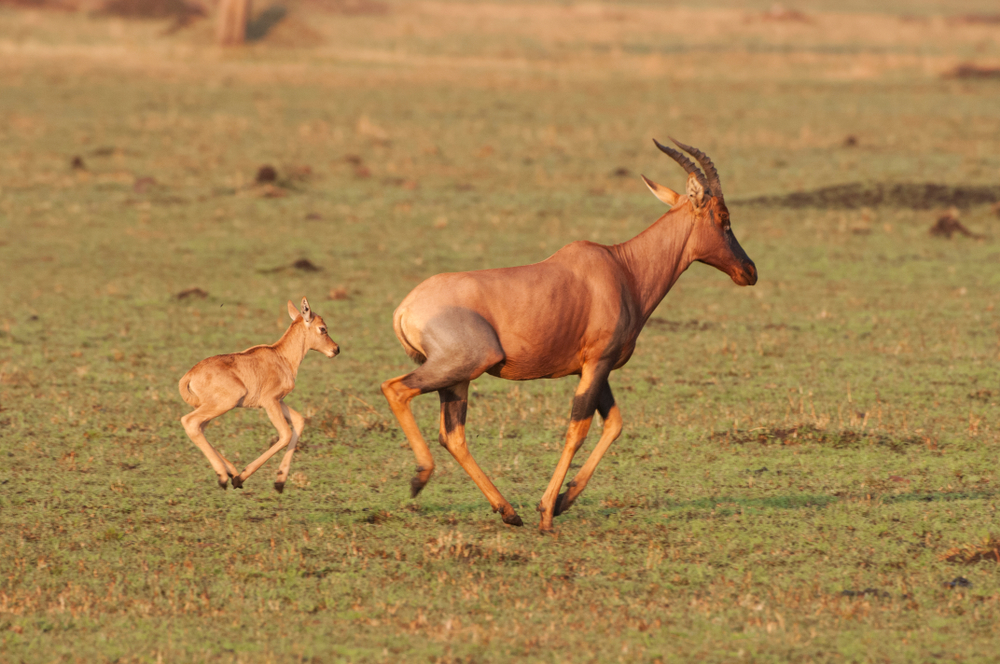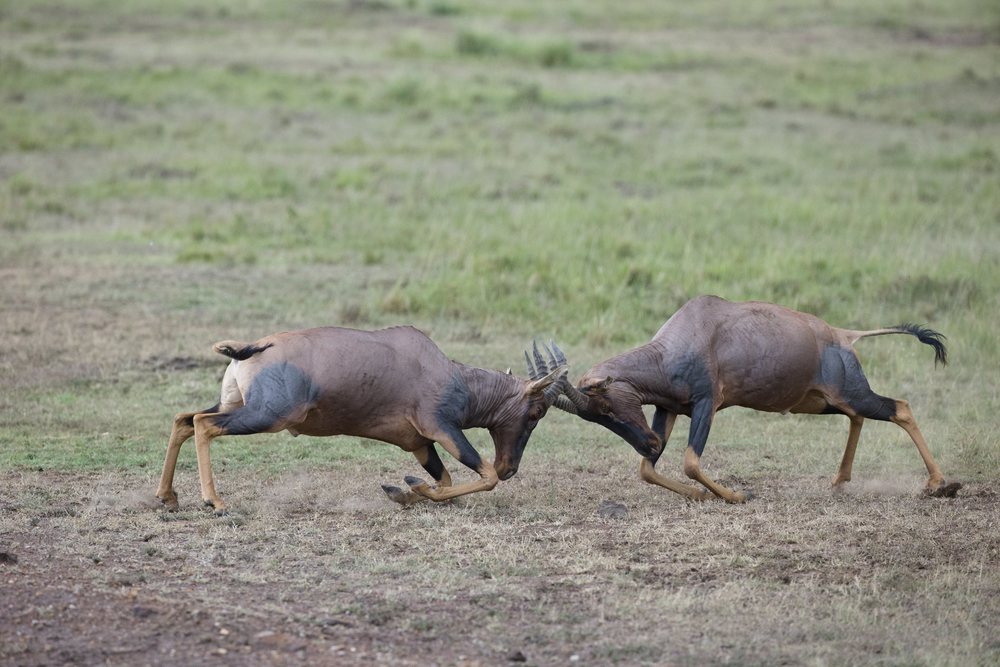Topis (Damaliscus lunatus jimela) share certain similarities with other antelope species, but they also exhibit distinctive characteristics and behaviors that set them apart. Here’s a comparison of Topis to other antelope:
Similarities:
- Herbivorous Diet: Like many other antelope, Topis are herbivores that primarily feed on grasses. Grazing on grass is a common dietary trait among antelope species.
- Social Behavior: Topis are social animals that often form herds, especially during the rainy season. This social structure is common among many antelope species and serves as a defense against predators.
- Predator Adaptations: Topis, like other antelope, have evolved adaptations such as agility, speed, and alertness to evade predators like lions, cheetahs, and hyenas. Their survival strategy involves vigilance and swift flight.
Differences:
- Distinctive Face Mask: The dark facial markings of the Topi, extending from the eyes to the nose, are unique and set them apart from other antelope species in their range.
- Synchronized Mating Displays: During the rutting season, Topi bulls engage in synchronized mating displays called “topi leks,” which involve coordinated leaps and bounces. This behavior is less commonly observed in other antelope species.
- Habitat Preferences: While Topis are adapted to open grassland habitats, other antelope species may prefer different environments, such as woodlands, forests, or bushlands. For example, species like the bushbuck and nyala are more associated with forested areas.
- Physical Characteristics: Topis have a unique reddish-brown to chestnut coat, distinct facial markings, and curved horns. These physical features differentiate them from other antelope species, each of which may have its own distinct coloration, markings, and horn shapes.
- Ecological Role: Topis, through their grazing habits, have a specific role in shaping grassland ecosystems. Their feeding behavior influences the composition and growth of grasses, impacting the entire ecosystem.
- Precocial Calves: Topi calves are born relatively mature and mobile, allowing them to follow their mothers and join the herd shortly after birth. In contrast, some other antelope species give birth to more helpless and less mobile offspring.
While Topis share some common traits with other antelope, their unique characteristics, behaviors, and adaptations make them a distinctive and fascinating species within the diverse world of African antelope.






























































